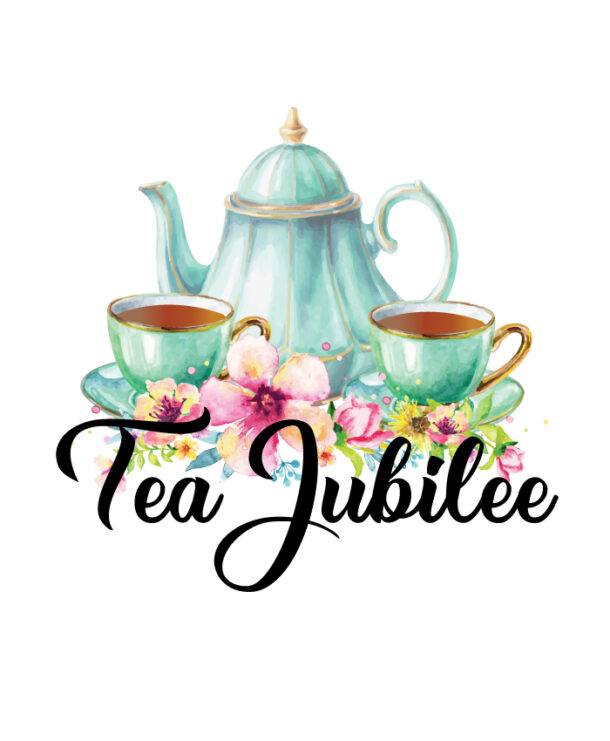==================
A Caveat and Affiliates
First off, a little caveat: within my articles you will find affiliate links, meaning if you buy them, I get a small commission. Your cost is not affected. In addition, I am an Amazon Associate and I earn from qualifying purchases on Amazon.
And yes, if I say that I recommend a product here, it means I truly believe it is a good product. I refuse to recommend any product that I have not researched and believe to be a good value.
Even better, I provide you with a very clear picture of the product, it’s use, and the probable value.
Earning your trust is important to me. I run this website myself and the commissions and donations help support the site.
Sound reasonable and fair enough? Let’s continue to the article.
==================
Contents
Best teas when sick.
Tea For covid? Yes! I know it will sound crazy to some, but it sounds very typical for most. So here are nine reasons to try out green tea when you get the covid vaccine.
When this all started, I was thinking. So what can I have that will keep me healthy? I got a light bulb moment then! Tea! one answer is Tea! But not just any regular tea to have any time of the day. It has to be the ones that I will mention in this post today.
I drink lots and lots of Tea. And while I know this won’t prevent contracting the coronavirus, just like some of the other half-baked claims floating around on the internet, I believe that small and intelligent choices will add up to a general healthier immune system, able to fight better what might come at it.
So did you know that drinking tea daily is generally just a wise thing? It increases daily fluid intake, helps maintain a healthy metabolism and circulatory system, is a rich source of vitamins, and can help boost your immune system? Studies show that components such as L-theanine and EGCG (these are exceptionally high in white and green teas) give your fighting T cells a boost.
As with any tea or herbs, please consult with your healthcare provider before drinking any of these brews due to potential allergies and severe drug interactions or if you are pregnant.
Please keep reading to learn about some other immune-supporting teas to enjoy soon.
Rosemary
Everyone should have at least one rosemary plant, either for culinary purposes, decorative style (think cute topiaries on tables), low-water landscape reasons, or for healing, aromatic, and flavorful Tea. Rosemary is antioxidant-rich, antimicrobial, and high in anti-inflammatory compounds, mainly due to its polyphenolic compounds like carnosic acid and rosmarinic acid.
Easy Rosemary Tea Recipe:
1. Boil 10 ounces of water.
2. Add one teaspoon of fresh organic rosemary leaves to your cup or place the leaves in a tea infuser.
3. Pour the water over the leaves and cover (this helps keep the potent volatile oils from escaping). Aim for 5–10 minutes, but the steep time depends on how robust you like your Tea.
4. Strain the leaves using a small holed strainer or remove the tea infuser.
5. Add some honey (full of excellent anti-bacterial properties) if you like.
Echinacea
Echinacea is a beautiful plant whose leaves and roots have been used for centuries to help ward off winter illness and other medicinal purposes. In clinical trials, echinacea has shown to be as effective as Tamiflu and with fewer side effects due to having antioxidant, anti-inflammatory, and antiviral properties.
While I am sure trained herbalists grow and dry their echinacea, I either purchase mine already in tea bags mixed with other herbs like elderberry (another powerhouse) or in bulk at the health food store. Then I add other healing herbs like lemongrass and peppermint.
Note: Alone, echinacea is not the tastiest, and the amount of Tea you need to drink to reap the health benefits varies depending on the quality of the Tea itself and how strongly you brew it. In general: Two teaspoons of dried echinacea root boiled in eight ounces of water is considered a serving.
Licorice Root
Long used in traditional Chinese medicine for various conditions, including infections, coughs, and digestive issues, studies now show that it could be effective at halting several species of bacteria and some viruses. Plus, it has antioxidant and anti-inflammatory properties and is excellent at loosening up mucus.
Easy Licorice Root Tea Recipe:
1. Add one tablespoon of chopped licorice root to 1 cup of water in a pot.
2. Bring water to a boil and simmer for about 10 minutes.
3. Turn off the heat and allow the brew to cool for several minutes.
4. Strain before serving.
Rose Hip
Traditionally, rose hips (the seed pods of Rosa rugosa) were used in teas to cure scurvy and other ailments. Today they are used in everything from body and face products to jams and vinegar and have been linked to many health benefits, including improved immunity, heart health, and weight loss.
Rose hips develop in late summer and early fall after the roses bloom and are not dead-headed. The best time to forage for rose hips is after the first frost because the cold increases the natural fruit sugars, making them sweeter. Fresh rose hips are high in natural vitamin C, 25% more than citrus, making them excellent at warding off sickness.
Easy Rose Hip Tea Recipe:
1. Wash your organic rosehips to remove any dirt and pat them dry.
2. Boil a pot of water and pour it over the hips. Roughly use 1/4 cup of fresh hips to 1 cup of water.
3. Cover and let them steep for 15 minutes.
4. Strain the hips through a paper coffee filter and add honey if desired.
Sounds so yummy.
So here are some tips that I wanted to share. I am sure you can relate to doing some of this with your cup of Tea.
With nearly 21 percent of the adult American population considering themselves tea drinkers, I thought sharing the most common mistakes people make when brewing a batch would be helpful. Making these mistakes may not altogether cancel out Tea’s benefits, but they’re certainly not doing anything to help this miracle drink out. These mistakes range from ruining flavor to preventing the extraction of the most beneficial compounds.
Keep these in mind the next time you put the kettle on the stove, and if you need any more convincing to order some tea leaves,
Your water is too hot.
It would help if you weren’t relying on that whistle of your tea kettle. That means your water has come to a boil—and it’s too hot. The heat can make those delicate tea leaves taste bitter and less sweet. Studies show that hot water can also destroy soft, health-promoting compounds like catechins. You want your water to be just under a rolling boil; you can eyeball to be around when tiny bubbles start to form alongside the kettle.
Now, there isn’t one temperature that works for every Tea—each is different. For example, green tea should be brewed between 180 and 185 degrees Fahrenheit while the water for black Tea should come to 206 degrees, and I have just the kettle for you 🙂 Click here to check it out.
You’re steeping it for too long.
Oh boy, I do this so much! And I had my mom tell me that if I left the teabag in the cup for too long, it would become very bitter. And I, for one, hate my Tea that is either bitter or cold. I know I am not the only one that is that picky.
Stop setting it and forgetting it! Like temperature, the length of time you steep your Tea will vary based on the leaves. White teas should soak between one and three minutes, green for three minutes, and black for three to five minutes. Any longer and your Tea will become bitter as it releases tannins. And, yes, tannins are the same compounds you find in wine.
But I am someone who likes her Tea at the temp of 170 to 175. I don’t want to burn my tongue, and I know some who like their Tea very hot.
You’re not steeping it long enough.
Too hot and your Tea becomes bitter, too cold, and you won’t extract the suitable compounds. It sounds like a story my mom read to me when I was a little girl. According to a Food Chemistry study, depending on the chemical composition of the compounds locked in Tea, they are released in specific stages in the steeping process.
The first compounds that come through when you submerge those tea leaves in water are the chemicals that contribute to Tea’s aroma and flavor profile. Following that is when the beneficial micronutrients—the flavanols and polyphenols—and the caffeine are released. Lastly, the heavier micronutrients and the bitter tannins come out. If you don’t steep your Tea long enough, you may be missing out on these beneficial compounds, and you may not get as much caffeine as you wanted!
You’re not using loose leaf.
Okay, I can relate to this one for sure! I love my teabags! I use bagged Tea because it’s easy to use, and the loose leaf tea is good, but they aren’t my kind of Tea. I know your thinking right now, Rebekah? Loose Tea and bagged are the same. And your so right, but here is the thing.
I have had bagged Tea since I had my first cup back at 9. I have loved it for six beautiful years, My brother gave me a pack of loose teas for a Christmas gift, and they are yummy teas, but I had to clean the infuser so much because of the leafs in there it’s not easy cleaning a unicorn infuser.
Yes, you read that right; I am a huge fan of unicorns! But that’s besides what I am saying. Bagged Tea is just better. So back to learning why you should use loose Tea more.
They may be convenient, but tea bags aren’t the best way to reap the benefits of Tea. Your standard grocery-store tea bag contains the leftover, broken tea leaves, called the “dust and fanning”—those that didn’t qualify to be used as loose-leaf Tea. These finely broken tea leaves have fewer essential oils and release more bitter tannins than whole leaf tea. No problem if you don’t have the patience for loose leaf tea.
Look for brews that are packaged in pyramid sachets. These are typically higher-quality teas, and the bag is specifically designed to allow for proper water flow. It also has a leg up on the traditional tea bags since those flat bags are often bleached paper, which can add chemicals and off-flavors to your Tea.
You’re not reusing your teabag.
It’s time I crush the myth that you shouldn’t use the same tea bag twice. You’ll experience unique flavors with high-quality teas after two or three steeps—flavors that you wouldn’t taste after just one dunk. To do this properly, there is one rule: don’t let your Tea leaves stew once they have been infused. When you remove the tea leaves from your cup, you let them drip dry. It will prevent the leaves from becoming bitter. If you steep your tea multiple times, be aware that you’ll be extracting more caffeine every time (albeit in much smaller doses than your first steep).
You’re not using high-quality water.
You’ll want to use filtered water for the absolute best cup of tea. Tap water is disinfected with chlorine and may contain sediment, fluoride, and other minerals. Many compounds can contribute to off-flavors in your Tea. Bonus tip: If you need to use tap water, use cool, not hot water. While it’s true that using hot water will bring the water up to a boil faster, it adds additional impurities from your home’s water heater.
You add too many ingredients.
It won’t necessarily reduce the health benefits of Tea; however, it will affect the full flavor of the Tea and will undoubtedly increase the number of calories in your cup. The most popular add-ins for Tea are sugar or sugar substitute, honey, and whole or reduced-fat milk. This same study found that doctoring up your cup can add 69 calories to your plate—which can add up if you aren’t paying attention. If you need add-ins, opt for healthier options like low-calorie milk alternatives and use small amounts of natural sweeteners like honey.
You’re not using the proper cup.
Because you steep Tea at a relatively high temperature, you’ll want it to cool down before drinking it. The larger surface area of a wide-mouthed cup—as opposed to a standard small-mouthed and tall coffee cup—will allow the top of your Tea to cool down enough to drink it. The shallowness of the cup will also limit how much Tea you pour in at a time. When your Tea is at the right sipping temperature, the whole cup will be the right temperature throughout if you’re looking for something to put in that cup of coffee.
Here is the cup I use.

You’re not using a teapot.
I have to ask you, how on earth do you make Tea without a teapot!? Lol. All joking aside, using a teapot is just super easy, and I have one that is a dream one, but sadly the manufacturer stopped making the teapot I use. And it’s sad because I would love to link to it. After all, as I said, It’s an excellent teapot! But let’s get back to why using a teapot is the best thing for a beautiful cup of freshly brewed tea.
If you want cold Tea, you should drink iced Tea. If you pour yourself a big cup of tea, there’s a high likelihood of that cup cooling down to a less-than-ideal temperature before you finish it. That’s where the trust teapot comes in. Using a teapot allows your Tea to stay warm for longer. By pouring a little bit of Tea in your cup at a time, it will always be the right temperature when you drink it. Just make sure you’re not overdoing it on those pours.
And that’s it! But wait..yes, there’s more.
Links to head to after reading this post.
You thought I was going to end this post without links to visit? Haha, nope! This first link is to a recipe, and it’s a rice and veggies recipe! You can’t go wrong with rice dinners, so here is the link.
The following link is to a site that has quickly become a great site to visit often to learn new things about coffee. And it’s not with any recipe or the best Starbucks drink; it’s more of what to do if you have leftover coffee beans or want to make coffee on your stove; easy to Espresso has the tips you’re looking for.
This very last link is going to a site againwiths food you can make any time of the day. And I have a recipe for you to make just before enjoying the rice and veggies. Ready to learn about this recipe? It’s blueberry muffins! Yes, I have made these a few times, and they come out so lovely and soft.
And that’s it! I am being honest; It’s the end of this post for today. Have a wonderful and blissful day!










Thank you for the suggestion of planting rosemary at home. I really like to have it in meals and I’ll also try rosemary in tea.
Getting a good night’s sleep is an important part of recovering. And chamomile seems to be an excellent choice to help us with this. There is also some evidence chamomile acts as an anti-inflammatory. So, I’ll also take it frequently.
Rosemary has many benefits and i love everyone of them! thank you so much for stopping by Tea Jubilee, stop by soon.